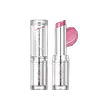What's inside
What's inside
 Key Ingredients
Key Ingredients

No key ingredients
 Benefits
Benefits

 Concerns
Concerns

 Ingredients Side-by-side
Ingredients Side-by-side

Caprylic/Capric Triglyceride
MaskingBis-Diglyceryl Polyacyladipate-2
EmollientHydrogenated Polyisobutene
EmollientOctyldodecanol
EmollientPentaerythrityl Tetraisostearate
EmollientSynthetic Wax
AbrasivePhytosteryl/Isostearyl/Cetyl/Stearyl/Behenyl Dimer Dilinoleate
Skin ConditioningHydrogenated Castor Oil Dimer Dilinoleate
Skin ConditioningIsoeicosane
EmollientSqualane
EmollientPolyethylene
AbrasiveTridecyl Trimellitate
EmollientCamellia Japonica Seed Oil
EmollientDimer Dilinoleyl Dimer Dilinoleate
EmollientPyrus Malus Seed Oil
EmollientDiisostearyl Malate
EmollientTitanium Dioxide
Cosmetic ColorantCocos Nucifera Oil
MaskingOpuntia Ficus-Indica Stem Extract
Skin ConditioningPolyglyceryl-2 Triisostearate
EmulsifyingDiglyceryl Sebacate/Isopalmitate
EmollientPolyglyceryl-2 Diisostearate
EmulsifyingPentaerythrityl Tetra-Di-T-Butyl Hydroxyhydrocinnamate
AntioxidantTrehalose
HumectantGlycerin
HumectantWater
Skin ConditioningTocopherol
AntioxidantDisodium Phosphate
BufferingCI 45410
Cosmetic ColorantCI 77492
Cosmetic ColorantCI 19140
Cosmetic ColorantCI 15850
Cosmetic ColorantCI 42090
Cosmetic ColorantParfum
MaskingCI 77491
Cosmetic ColorantCI 77499
Cosmetic ColorantCI 17200
Cosmetic ColorantCaprylic/Capric Triglyceride, Bis-Diglyceryl Polyacyladipate-2, Hydrogenated Polyisobutene, Octyldodecanol, Pentaerythrityl Tetraisostearate, Synthetic Wax, Phytosteryl/Isostearyl/Cetyl/Stearyl/Behenyl Dimer Dilinoleate, Hydrogenated Castor Oil Dimer Dilinoleate, Isoeicosane, Squalane, Polyethylene, Tridecyl Trimellitate, Camellia Japonica Seed Oil, Dimer Dilinoleyl Dimer Dilinoleate, Pyrus Malus Seed Oil, Diisostearyl Malate, Titanium Dioxide, Cocos Nucifera Oil, Opuntia Ficus-Indica Stem Extract, Polyglyceryl-2 Triisostearate, Diglyceryl Sebacate/Isopalmitate, Polyglyceryl-2 Diisostearate, Pentaerythrityl Tetra-Di-T-Butyl Hydroxyhydrocinnamate, Trehalose, Glycerin, Water, Tocopherol, Disodium Phosphate, CI 45410, CI 77492, CI 19140, CI 15850, CI 42090, Parfum, CI 77491, CI 77499, CI 17200
 Reviews
Reviews

Ingredients Explained
These ingredients are found in both products.
Ingredients higher up in an ingredient list are typically present in a larger amount.
This ingredient is an emollient, solvent, and texture enhancer. It is considered a skin-softener by helping the skin prevent moisture loss.
It helps thicken a product's formula and makes it easier to spread by dissolving clumping compounds.
Caprylic Triglyceride is made by combining glycerin with coconut oil, forming a clear liquid.
While there is an assumption Caprylic Triglyceride can clog pores due to it being derived from coconut oil, there is no research supporting this.
Learn more about Caprylic/Capric TriglycerideDiisostearyl Malate is an emollient and most often used in lip products. It comes from isostearyl alcohol, a fatty acid, and malic acid, an AHA.
As an emollient, Diisostearyl Malate helps create a thin film on your skin to trap moisture in. This helps keep your skin soft and smooth.
Parfum is a catch-all term for an ingredient or more that is used to give a scent to products.
Also called "fragrance", this ingredient can be a blend of hundreds of chemicals or plant oils. This means every product with "fragrance" or "parfum" in the ingredients list is a different mixture.
For instance, Habanolide is a proprietary trade name for a specific aroma chemical. When used as a fragrance ingredient in cosmetics, most aroma chemicals fall under the broad labeling category of “FRAGRANCE” or “PARFUM” according to EU and US regulations.
The term 'parfum' or 'fragrance' is not regulated in many countries. In many cases, it is up to the brand to define this term.
For instance, many brands choose to label themselves as "fragrance-free" because they are not using synthetic fragrances. However, their products may still contain ingredients such as essential oils that are considered a fragrance by INCI standards.
One example is Calendula flower extract. Calendula is an essential oil that still imparts a scent or 'fragrance'.
Depending on the blend, the ingredients in the mixture can cause allergies and sensitivities on the skin. Some ingredients that are known EU allergens include linalool and citronellol.
Parfum can also be used to mask or cover an unpleasant scent.
The bottom line is: not all fragrances/parfum/ingredients are created equally. If you are worried about fragrances, we recommend taking a closer look at an ingredient. And of course, we always recommend speaking with a professional.
Learn more about Parfum